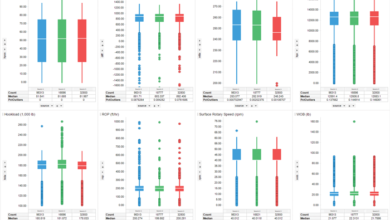Perspectives: Harris Reynolds, Diamond Offshore Drilling: Boom or bust, offshore industry must focus on innovations to drive down costs
By Linda Hsieh, Managing Editor

In an industry downturn, especially one as severe as the one currently plaguing the oil and gas business, it can be instinctive for companies to postpone investments in technical innovations. But Harris Reynolds, Director of R&D at Diamond Offshore Drilling, believes that would be a short-sighted approach. “We have to bring the cost of exploration and production down radically,” said Mr Reynolds, who also serves as Chairman of the IADC Future Technology Subcommittee. “There has to be a paradigm shift to get costs down for offshore.”
Throughout his 30-plus years in the industry, Mr Reynolds has been developing technologies that help to increase efficiency and reduce costs. In fact, his keen ability to find “holes in the market” – or products and services that are needed yet are not available – was recognized during his first job out of college. In 1981, he had taken an international sales position at Oilwell Supply, a predecessor company to today’s National Oilwell Varco, after graduating from Dartmouth College with bachelor’s degrees in engineering and economics. It wasn’t long, however, before the company recognized his ability to spot technology gaps and transferred him into product development and management.
By 1991, Mr Reynolds had joined Hydril, at the time a relatively small manufacturer of pressure-control equipment that “maintained competitive advantage through patented technology.” He was soon running patent operations for the company, where he was quick to learn both the language of engineers and the language of lawyers. “I was kind of the intermediary,” Mr Reynolds recalled. “I had to coax the engineers into a patentable invention, and I had to coax the lawyers into handling it properly. The key is you have to find an engineer who is good with language. I’m actually better with language than I am with engineering.” This focus on patents resulted in a diverse patent portfolio for Hydril, which ended up being acquired by Tenaris and then GE.
In 2007, Mr Reynolds was recruited into an R&D position with Diamond. Over the past decade, he has focused on helping the drilling contractor to reduce well delivery times and improve the economics of offshore E&P. This means he has to shepherd along innovations that can actually bring a financial benefit to the company and weed out the ones that won’t. “The driver has to be the economics of the tool,” he said.
One such innovation that has been under development for the past couple of years is the Floating Factory drillship concept, which features a Huisman drill tower, a dual mud pit system and 50% more dedicated rig space than typical sixth-generation drillships. Mr Reynolds has also been advancing Diamond’s competencies in computational fluid dynamics (CFD). Although this is not a common core competency for most drilling contractors, he introduced CFD research into the company because it provides the capability to do virtual fluid analyses – air gap analyses and simulations of rig motions, waves and other ocean motions.
As Director of R&D, Mr Reynold is further weighing the next steps to take with drilling automation, which he believes holds significant but unrealized potential. A high degree of automation has been achieved on today’s offshore drilling rigs, he said, yet drilling contractors have seen little in the way of actual cost reductions. In fact, rather than reducing the number of people needed onboard rigs, POBs have actually doubled. “We still have not reaped the rewards that we anticipated 35 years ago,” he said.
Helping the industry to realize the full potential of automation is not only a key element of Mr Reynold’s job at Diamond, but it’s also driving his participation with the IADC Advanced Rig Technology (ART) Committee and its Future Technology Subcommittee. With both roles, he said, his focus is on advancing existing and new technologies that will drive down operational costs.
To this end, the ART group recently kicked off the Spark Tank series – forums that provide innovators and entrepreneurs with immediate and practical feedback about their technologies and products. Only three Spark Tanks have been held to date, with a fourth planned for 2 August, so it’s too early to tell whether these events will have long-lasting impact on technology development in the drilling industry.
However, Mr Reynolds said he hopes they will at least help to direct the spirit for innovation toward the offshore drilling industry’s most critical need – cost reduction. “This is an opportunity to focus attention on these little technological innovations one by one,” he said. “We have to focus their attention on the financial payback for their invention. They can’t simply innovate for innovation’s sake.” DC
Click here to read more about Diamond Offshore’s Floating Factory drillship concept



